Tianguis: Mexico City’s Movable Markets
The makeshift marketplaces where you can purchase ripe mangos, eyelash curlers and live birds in a one-stop shop
Each Thursday morning, on a three-block stretch of Calle Ramón López Velarde in Santa María La Ribera, a makeshift marketplace springs to life. Vendors start arriving around 7am to assemble temporary stalls from bundles of metal joists and wooden planks capped with bright green tarpaulins. By 8am, the street is transformed into a bustling bazaar where sellers beckon shoppers with mountains of mamey, bubbling vats of carnitas and pozole-filled cauldrons alongside jumbo tube socks packs, pantyhose and pirated DVDs.
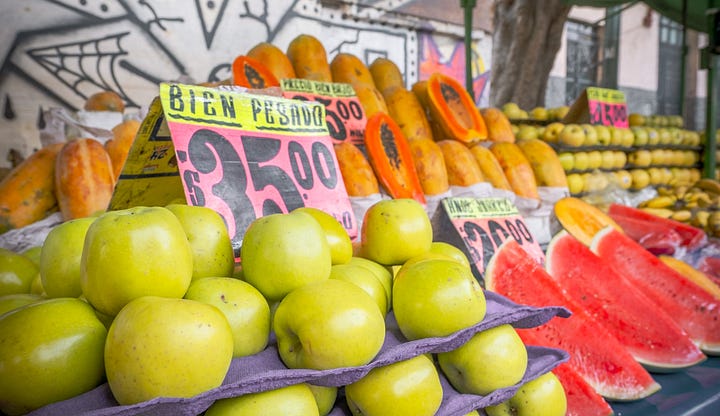

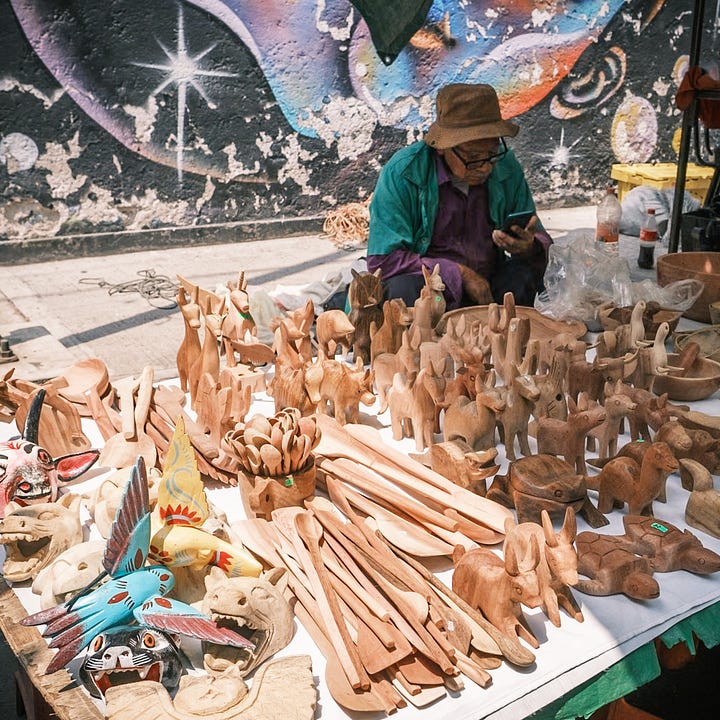
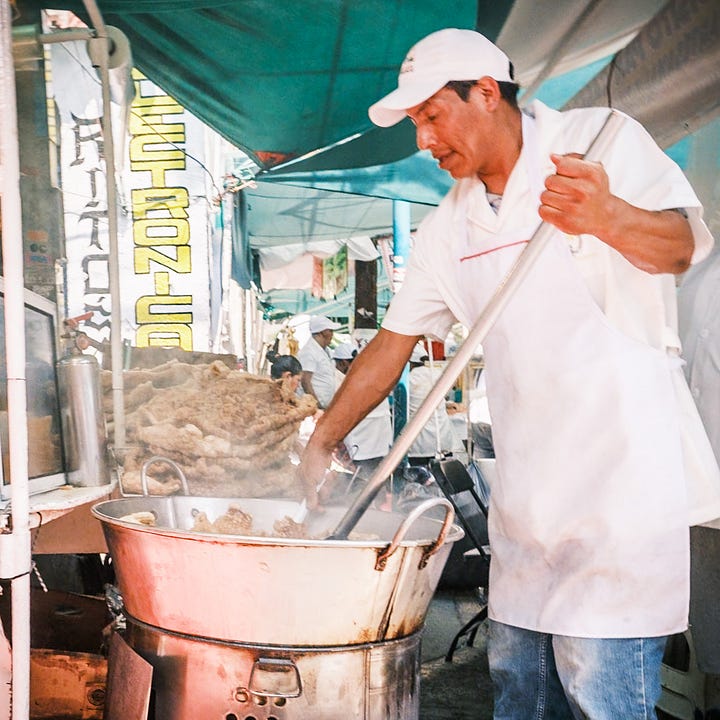
Part flea market, part farmers market, this vibrant scene is known as a tianguis (from the Náhuatl tianquiztli, or market) and is one of nearly 1500 open-air markets held weekly across Mexico City. Tianguis’ bargain-basement pricing on essential goods and outstanding prepared foods attract locals, from tattooed hipsters to multi-generational families, making them an essential part of Mexico City’s cultural fabric, and one of my favorite places to people-watch, shop and eat.
On this particular Thursday, my first visit to Tianguis Santa María, I arrive with a voracious appetite and so I opt to eat first, shop later.
While many of the prepared foods look appealing, I’m drawn to the stand with the massive comal. One glance at the abuelita whose hands are stained blue from freshly-nixtamalized corn and I take my place in line.
The menu lists an assortment of antojitos mexicanos: tlacoyos, quesadillas and gorditas (variations on a theme of fresh masa). Tlacoyos date to the Aztec Empire (when the tianguis first appeared) and remain a popular street food in the capital today. They are thick, flattened canoes, stuffed before hitting the griddle. Tlacoyos are typically topped with cactus salad, crumbled cheese and fresh salsa.
I’m partial to the quesadilla, which in a puzzling twist, does not necessarily contain cheese. In Mexico City, quesadilla refers to a longer, oblong tortilla that is folded over a filling. If you would like cheese inside your quesadilla, you must ask for “una quesadilla con queso.”
Although I’m sure the meat fillings are quite delicious, I’m eager for vegetables, specifically quelites (foraged greens), huitlacoche (corn fungus) and flores de calabaza (squash blossoms).
I scratch my order down on a pad of paper and write my name as Susana (it’s just easier that way). I take my seat at a table outfitted with a saran-wrap sneeze guard and salivate as my companions devour their fresh-off-the-griddle antojitos.
They call out my (mom’s) name and I claim my prize: three piping hot quesadillas. I bite into the one with foraged greens and let out a whimper: it’s the first tangle of vegetables (aside from onion and cilantro bits) I’ve encountered since touching down at Benito Juárez ten days earlier. It’s impossible to know exactly what I’m eating — quelites refers to the young, tender growth of upwards of 350 varieties of edible plants — but the greens taste satisfyingly sweet and grassy; with none of the unpleasant metallic taste I associate with spinach.
After inhaling my quesadilla, I pause and realize that the vendors are all looking over to make sure that I, the only non-Mexican at their stall, is satisfied with my food. I give them a warm smile and then dive into the huitlacoche quesadilla.
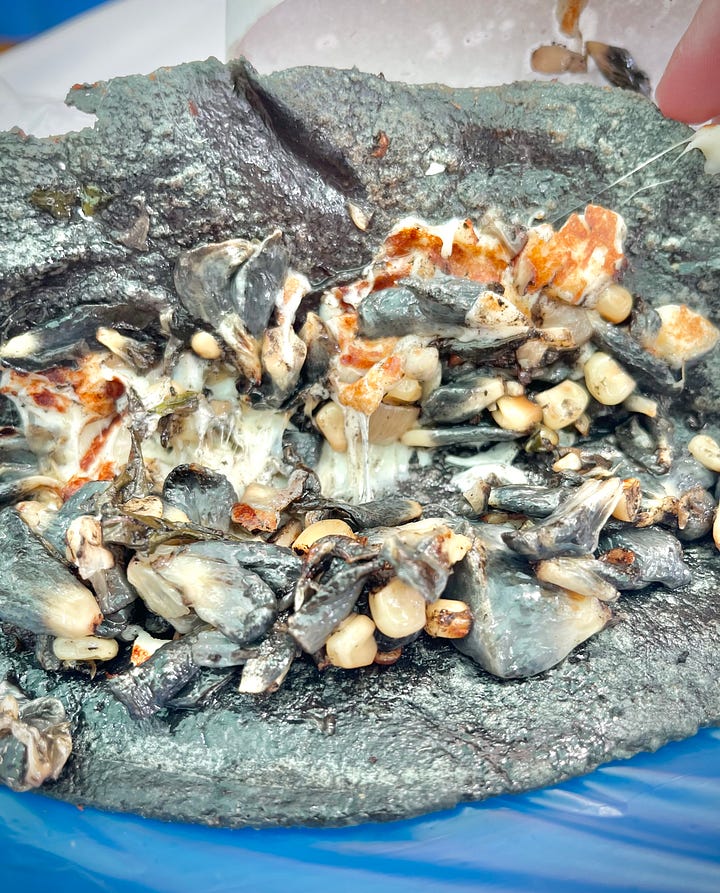
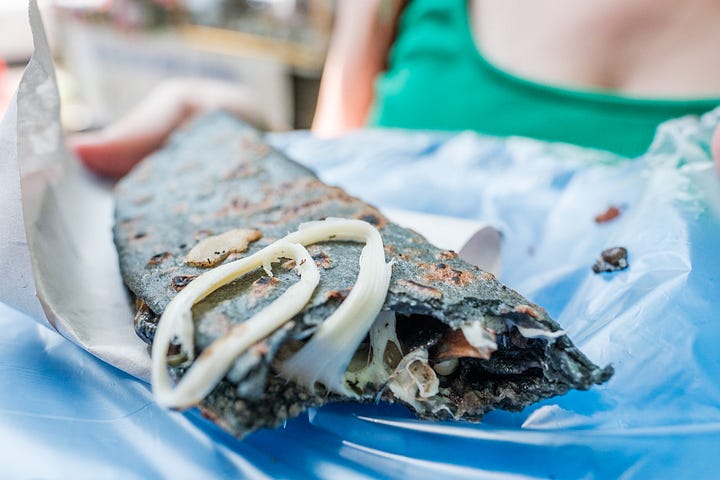
Neither “corn fungus” nor the disparaging “corn smut” effectively communicates the singular, nuanced flavors of this organism, which feeds off of corn before its ears fully develop. Sautéed with diced onion, the bulbous, blue-gray kernels are at once woody, smoky and a tad sweet. Enrobed in luscious quesillo (prized Oaxacan string cheese) and wrapped into earthy blue corn, I find them irresistible.
Next up is the squash blossom quesadilla. While Italians typically stuff the flowers with ricotta, batter and deep fry them, Mexicans allow the elemental, vegetal flavors of these delicate blossoms to shine. The textural combination of the fluffy petals and the chopped stems, again sauteed with diced onion and cradled in quesillo, is sublime. I thought nothing could be more satisfying than the huitlacoche, but on this particular day the flores de calabaza win out.
After settling up for my lunch, which involves plunking a few extra coins into the pocket of the gentleman who oversees the front-of-house, I wander through the maze of stalls. Two children dart through the narrow aisles, shooting squirt guns at one another while their mother peruses the vegetable stand.
I am tempted by the tower of crispy, honeyed buñuelos but I make my way to the dry goods stall for some amaranth and coconut-studded granola and my favorite drinking snack of fried pepitas and spanish peanuts showered with lime juice and salt.
At the edge of the market I notice a frenzied gaggle of women, gathering near a vendor hunched over a number of colorful, striped bags. I have no idea what she’s selling but I step in line nonetheless.
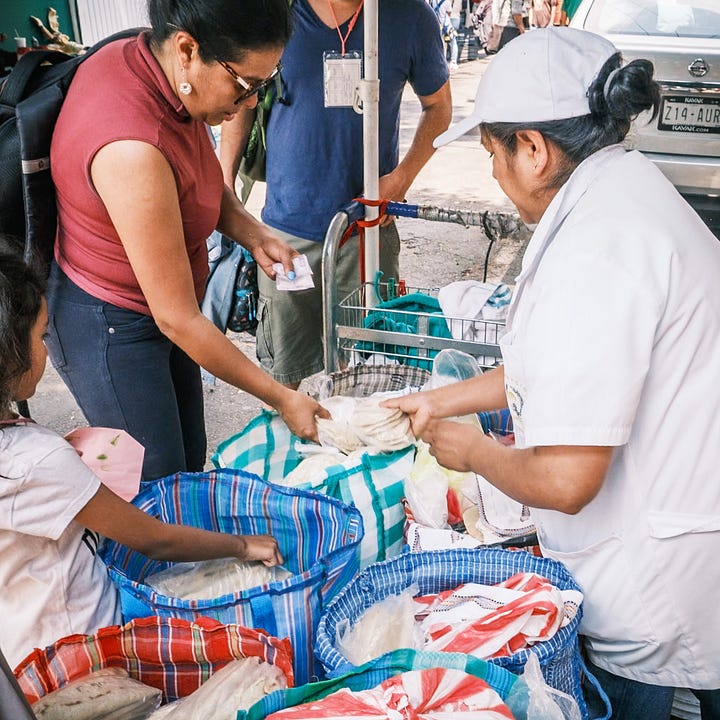
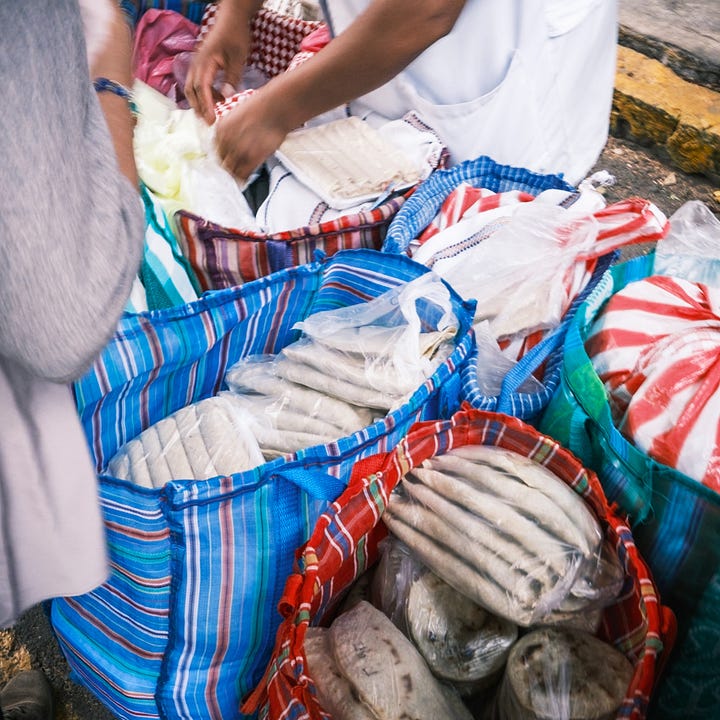
It turns out she has numerous varieties of filled masa goods — tlacoyos, sopes, huaraches, quesadillas — and plain tortillas fashioned from a variety of corn. As I approach the front of the line, I notice the transactions are hurried and tense: the vendor impatiently corrects a woman who orders sopes con frijoles even though she just explained that she has tlacoyos con frijoles and sopes con chicharrón. The woman before me places an order for dozens of items, and just as she gets out her wallet, she asks for even more.
Since I’ve already had my corn fix for the day, I place a modest order of one sope and one tlacoyo. I have so many questions but do not dare ask any of them, lest I interrupt this delicate dance. I can only assume she hails from one of the pueblos surrounding this massive city; in the typical tianguis structure, unlicensed vendors from outside the city jurisdiction fill out the edges of these ad-hoc marketplaces.
As I leave the market I pass by a caged song bird, a reminder that vendors sell anything and everything, as long as it’s portable. It's the sheer variety of goods, the tangible connection to the past and the flurry of social interaction that makes the tianguis experience irresistible.
Photos by Jared Wheeler
If you enjoyed this post, please forward it to someone who’d enjoy it, and tap the heart icon above or below, which will help me reach more readers. Thanks!





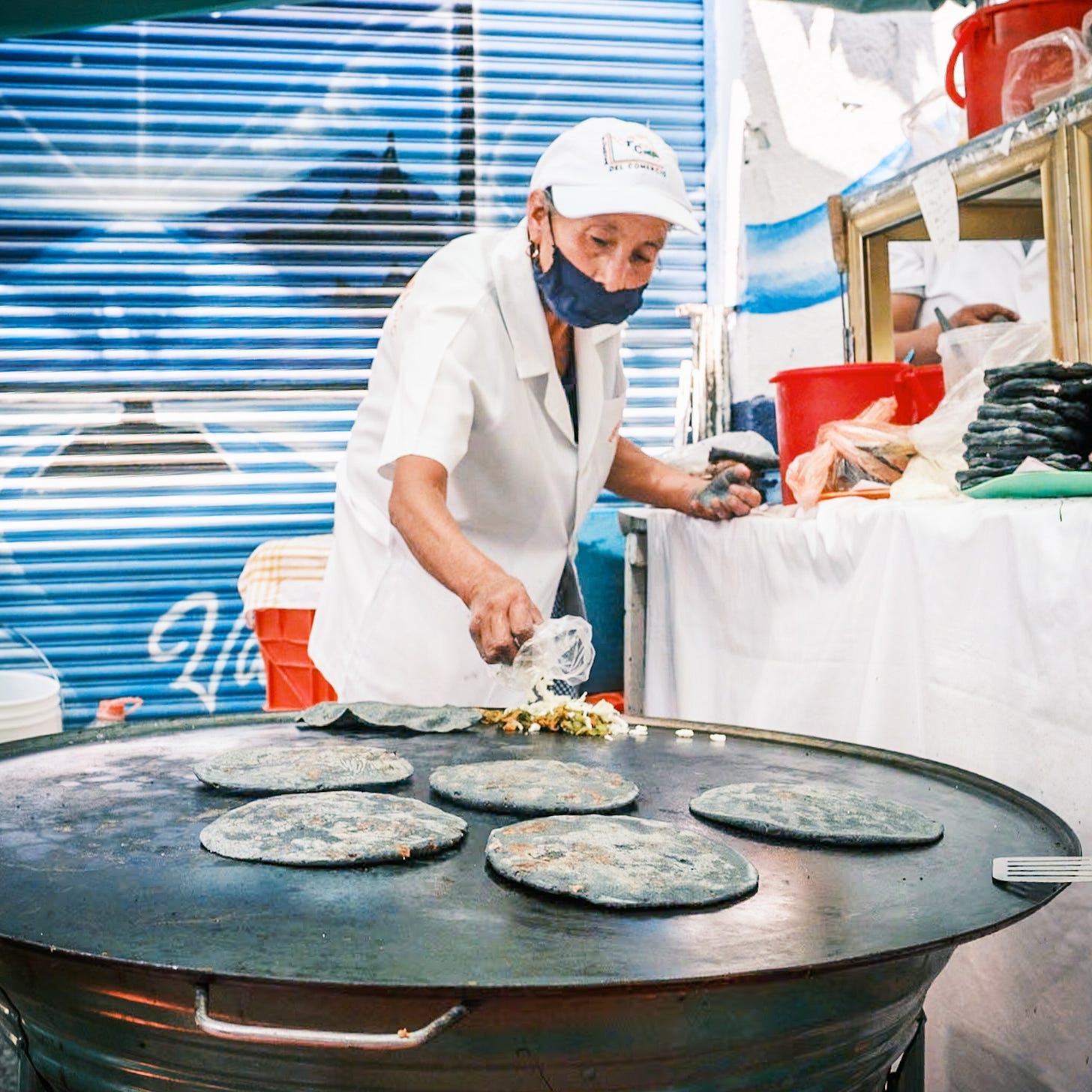
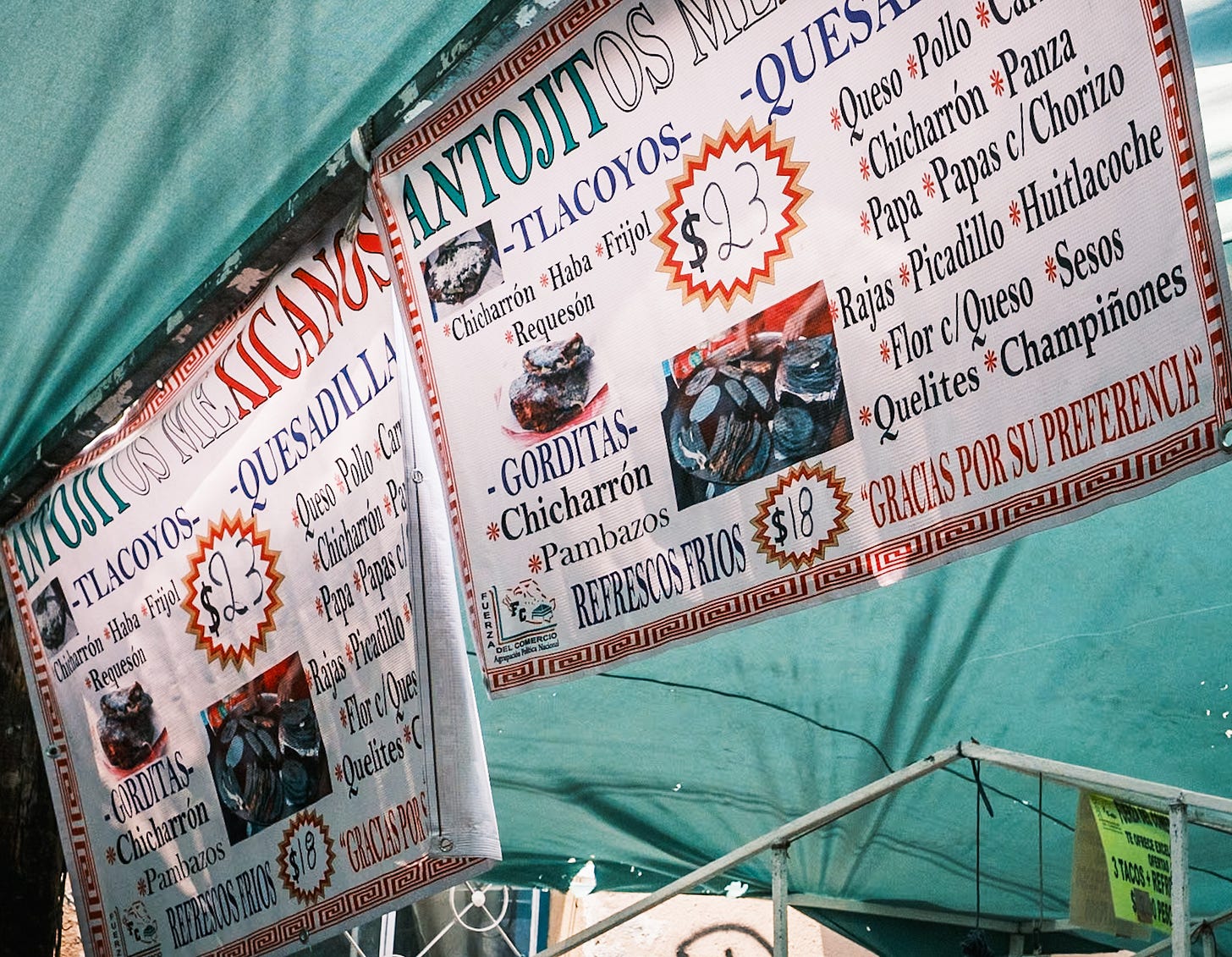
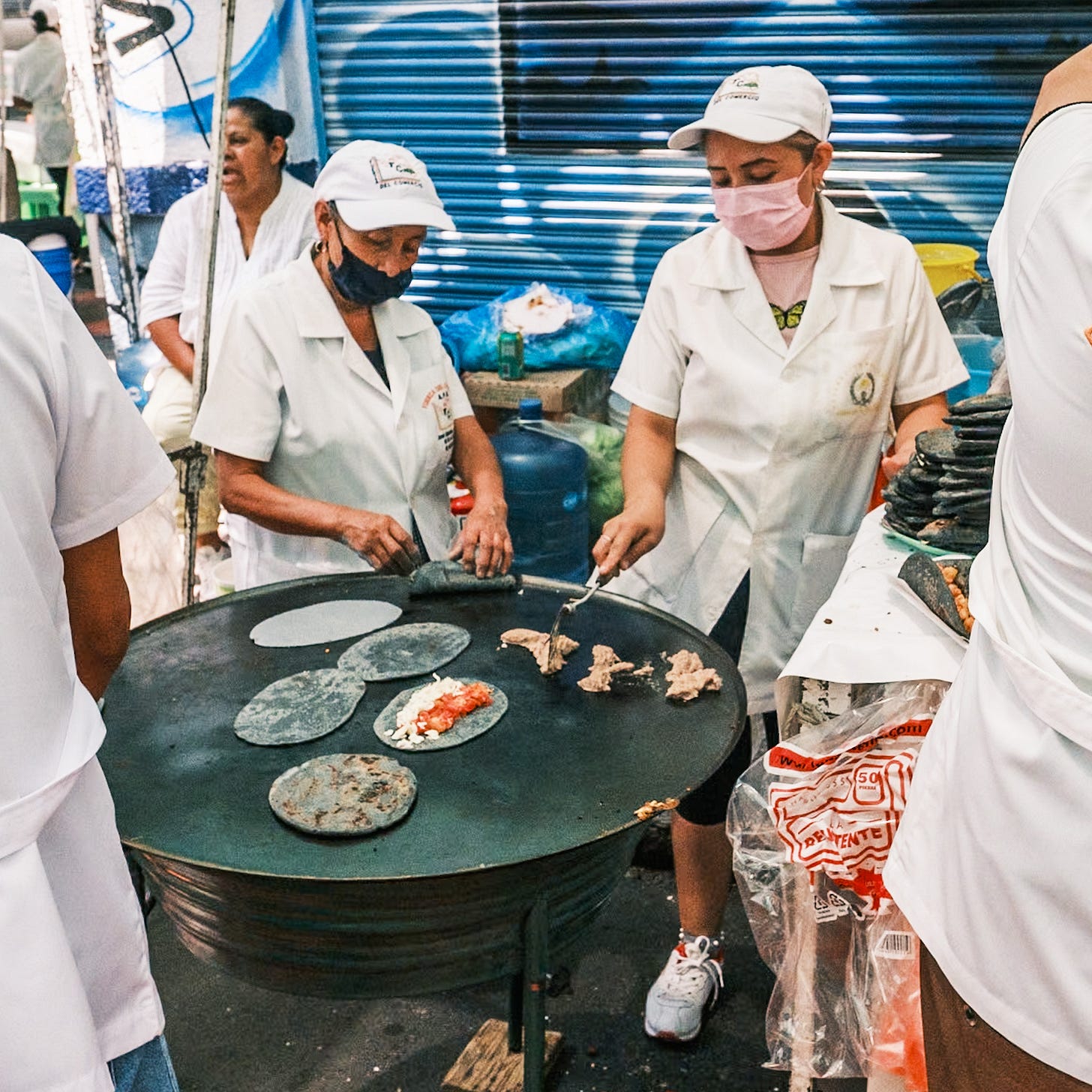
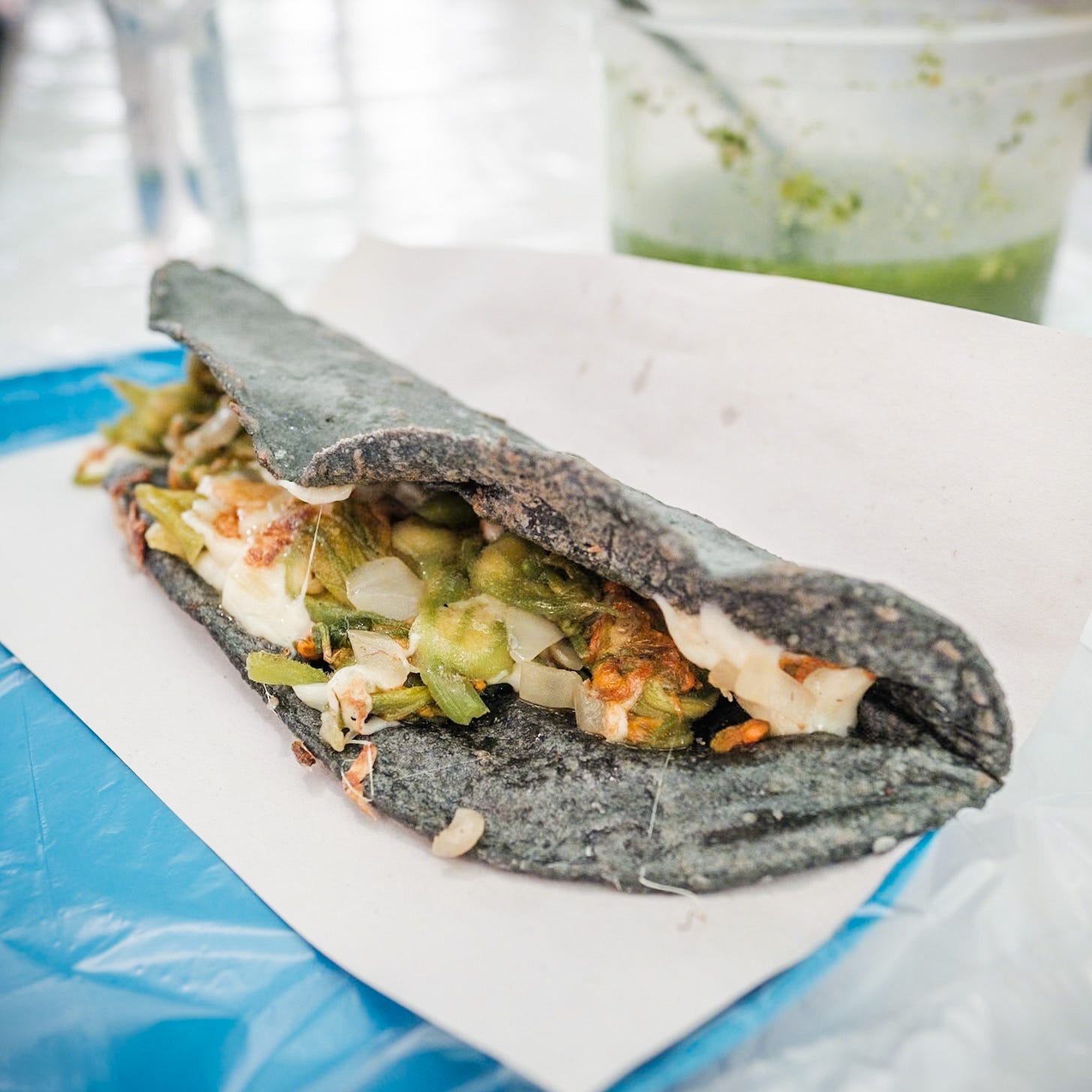
We had a few huitlacoche quesadillas on our last trip to Mexico City. Fantastic. Great photos!
I’ve only been to Mexico City once, but I immediately fell in love with the flavors and people-watching in the markets. I have a deep love for markets that began with going to the Christmas markets and bazaars when I was growing up in Germany, and I feel enlivened by the bustle, the smells, and explosions of colors and sounds. Reading your posts are like little hits of endorphins that hold me over until my next visit to CDMX.